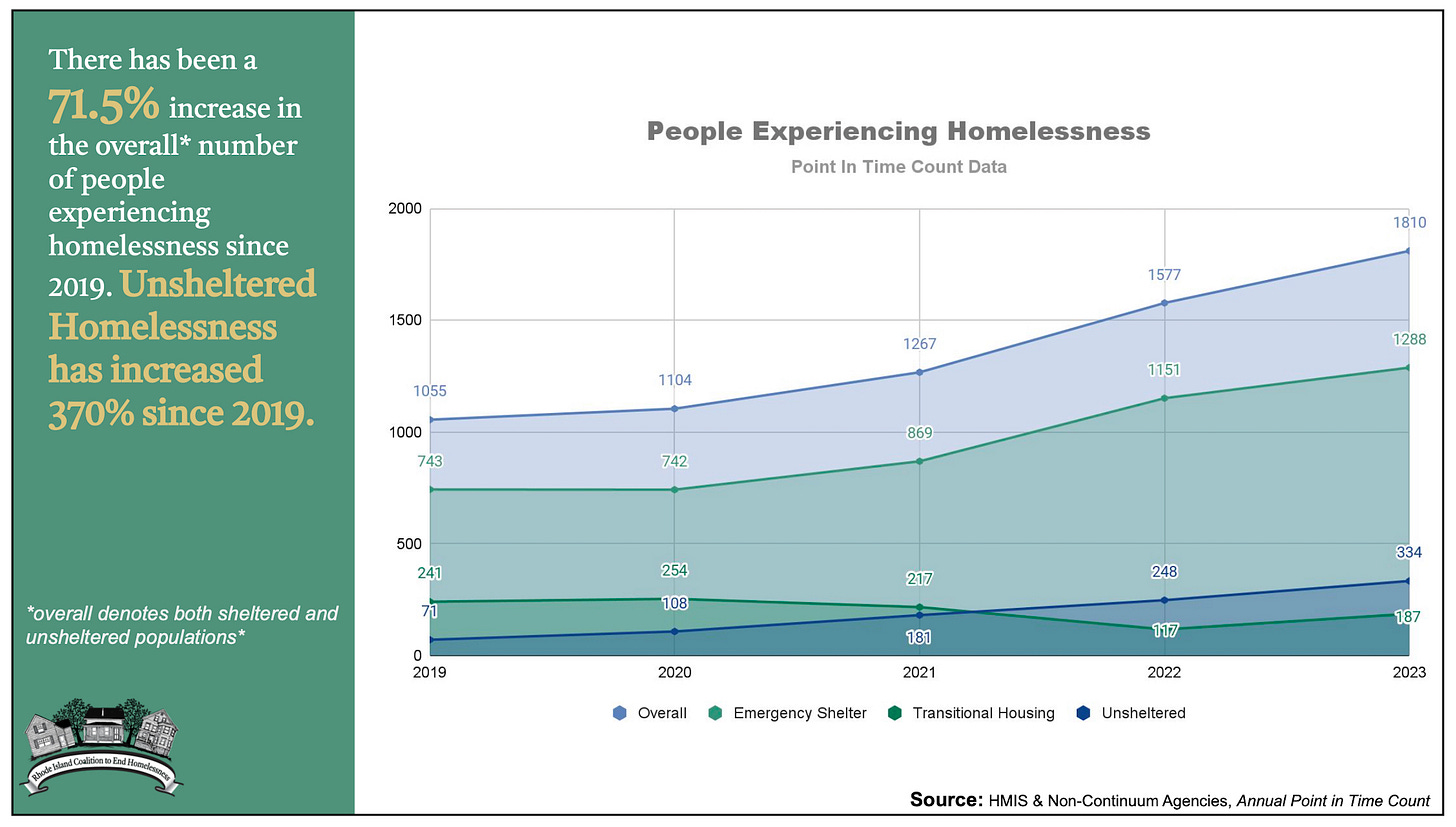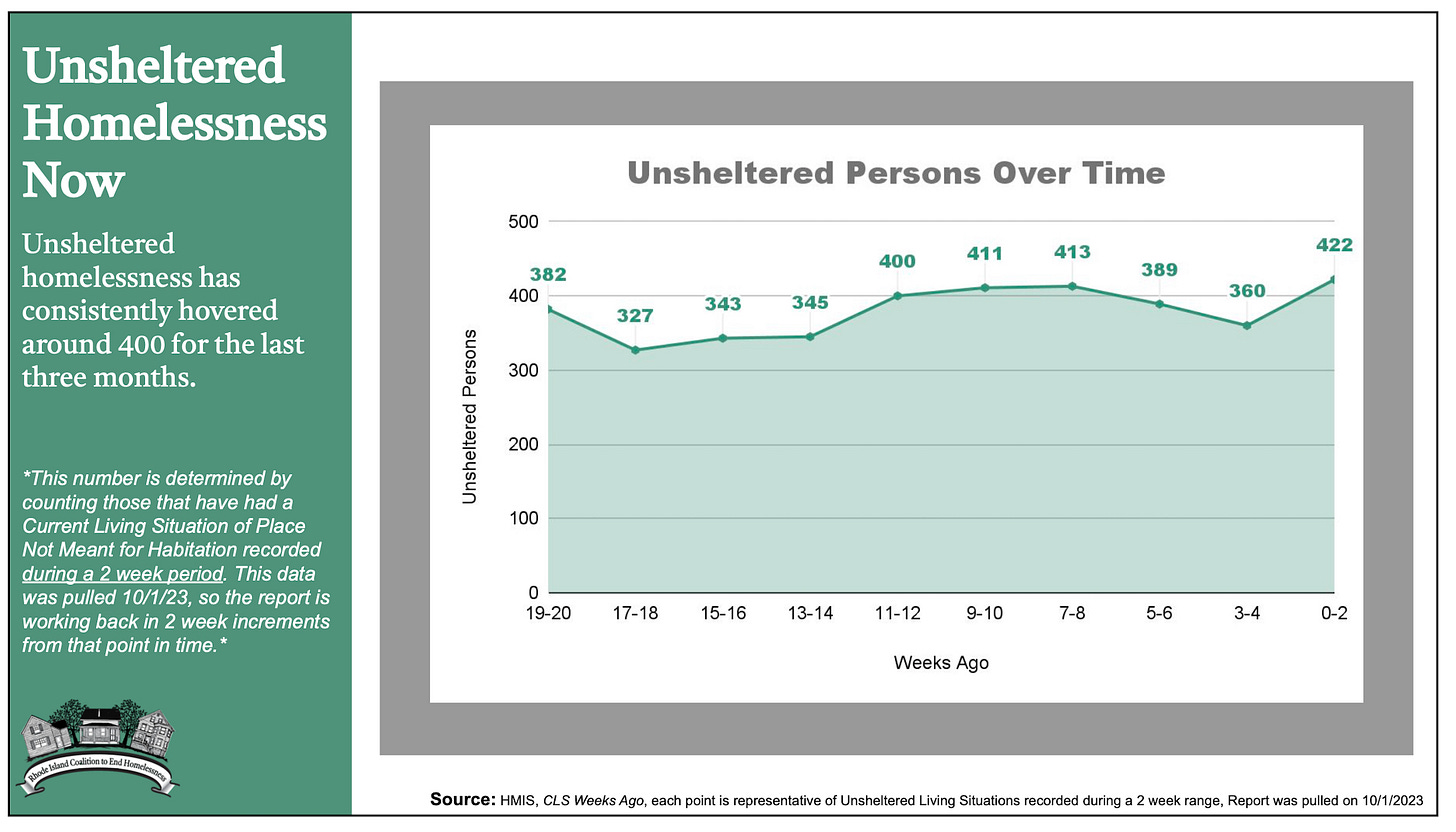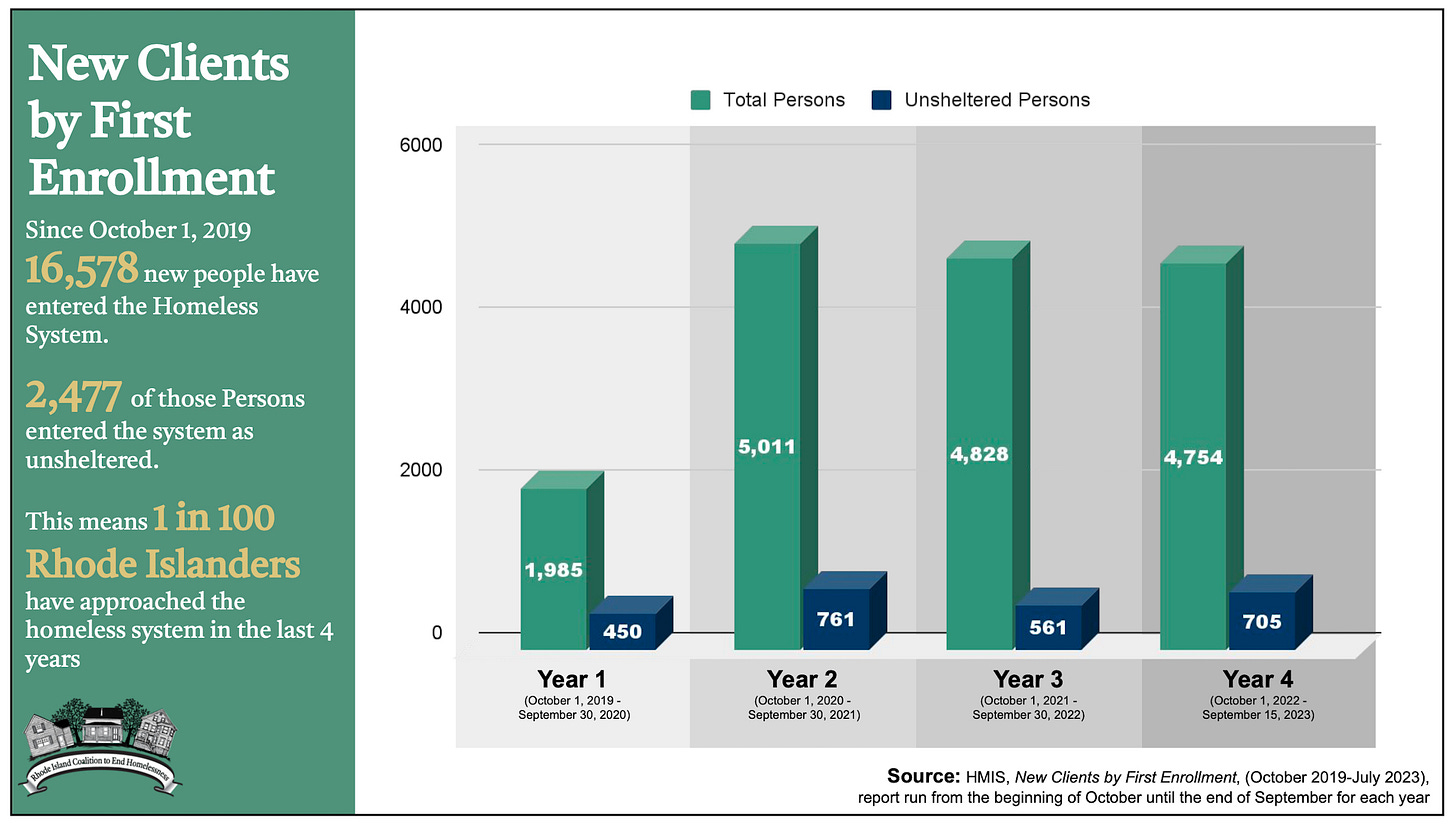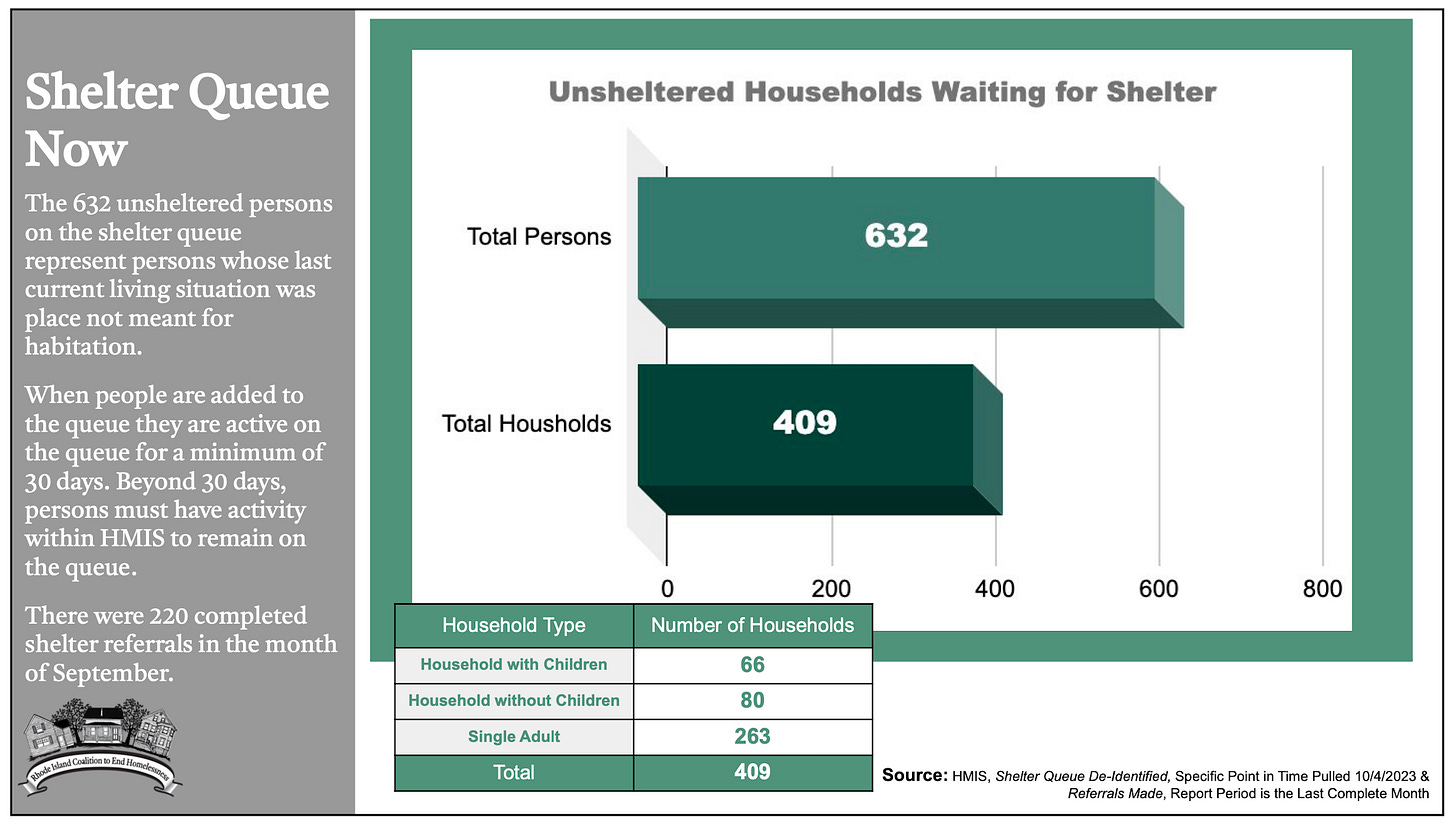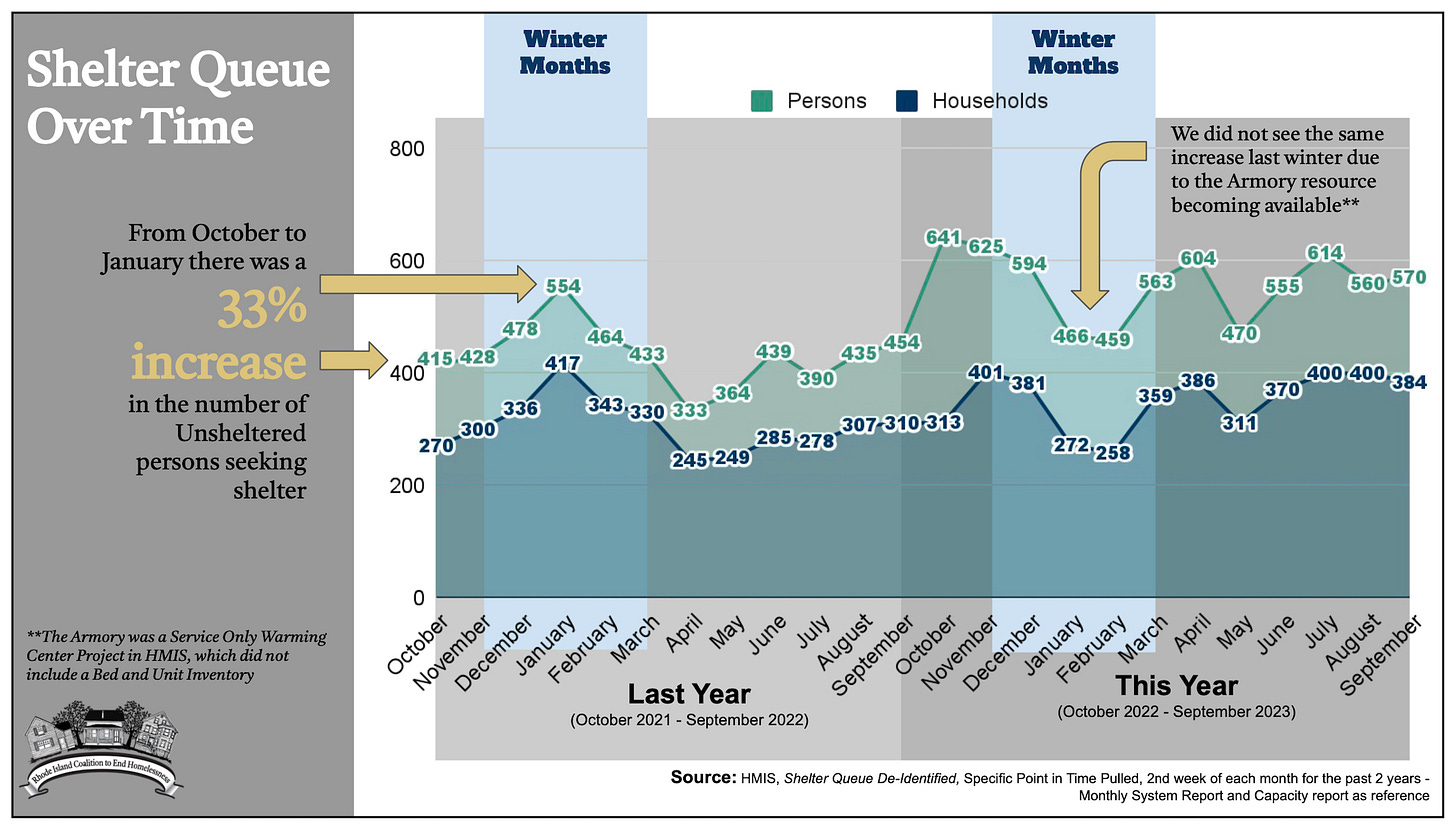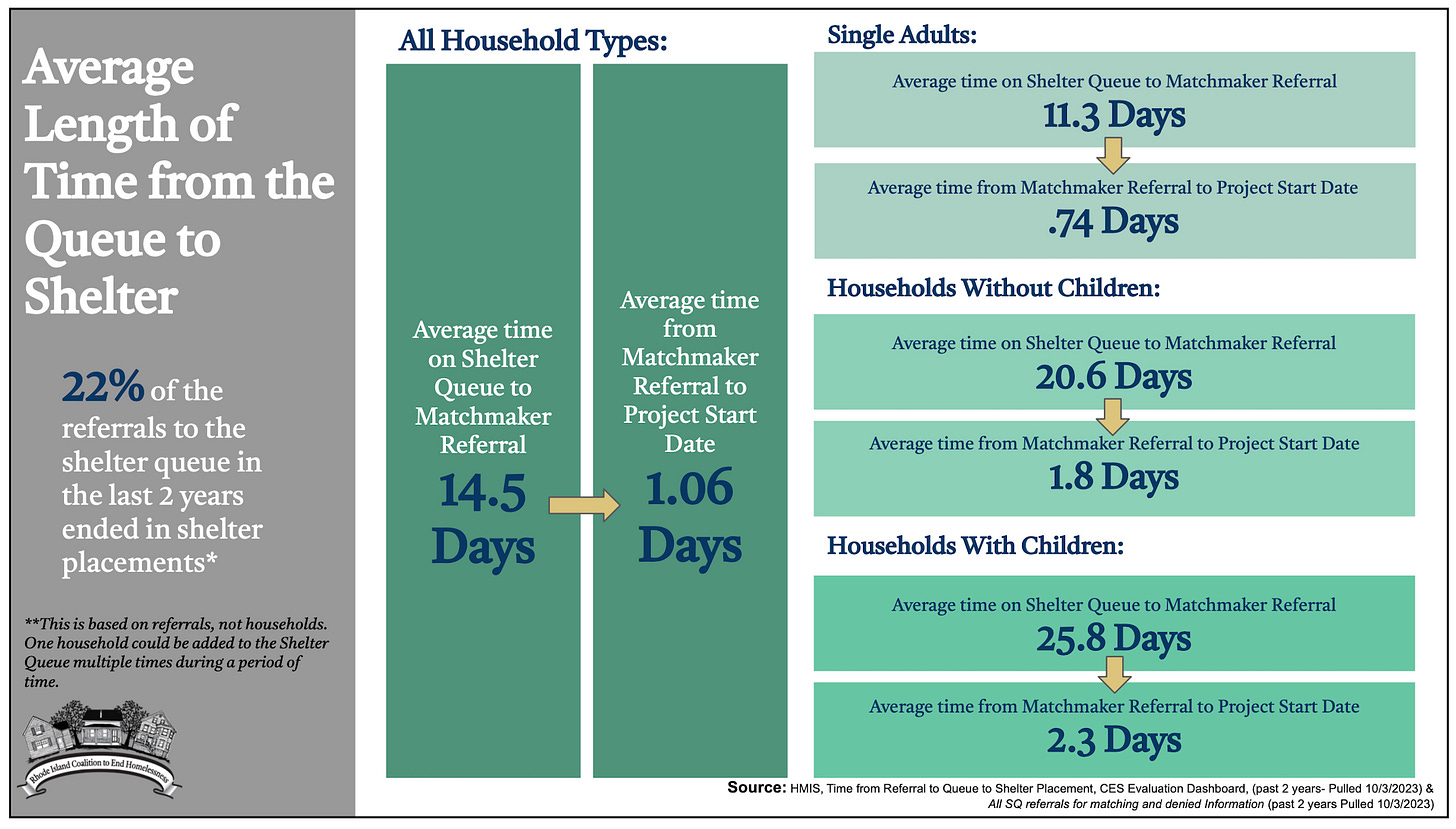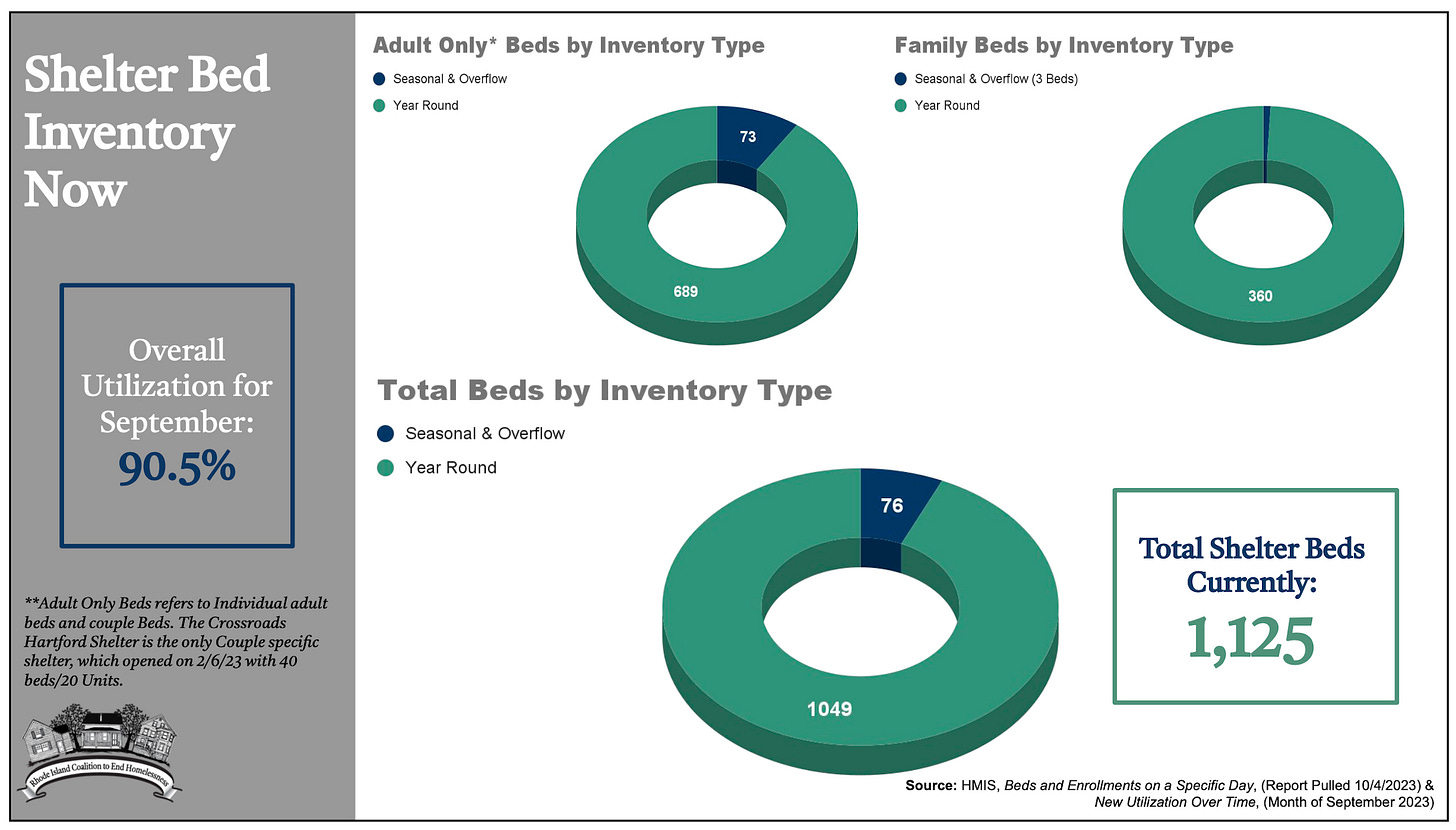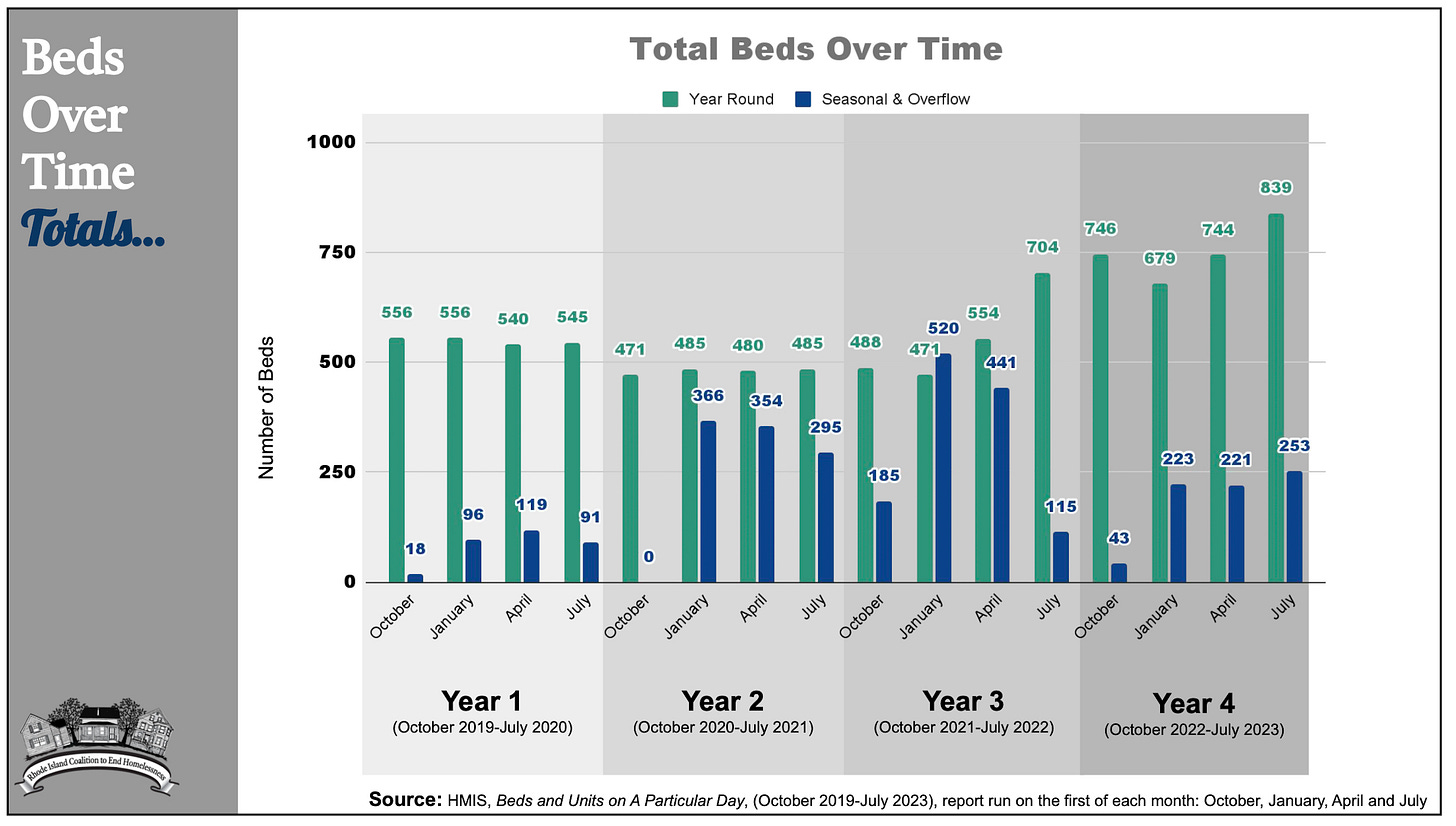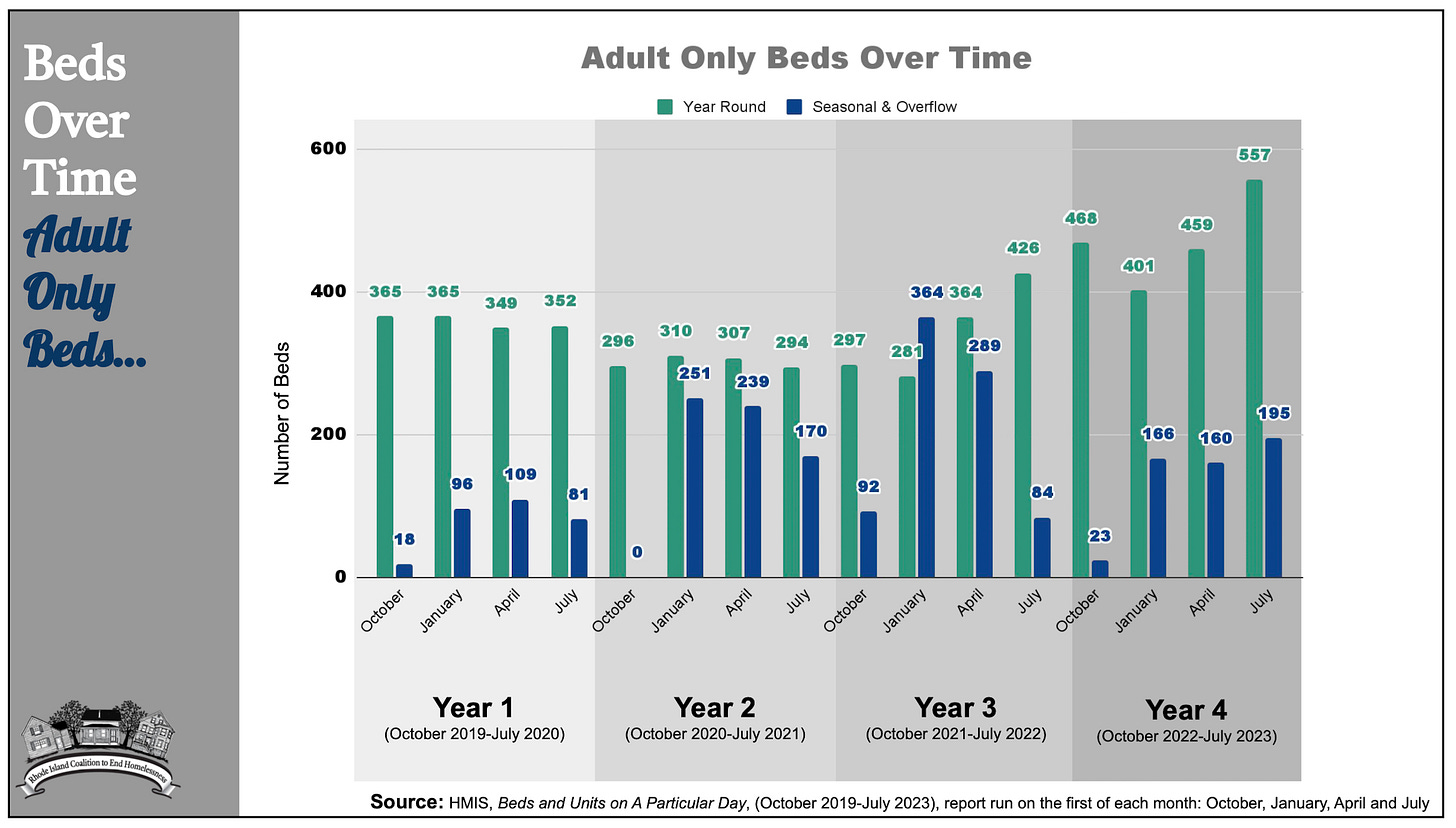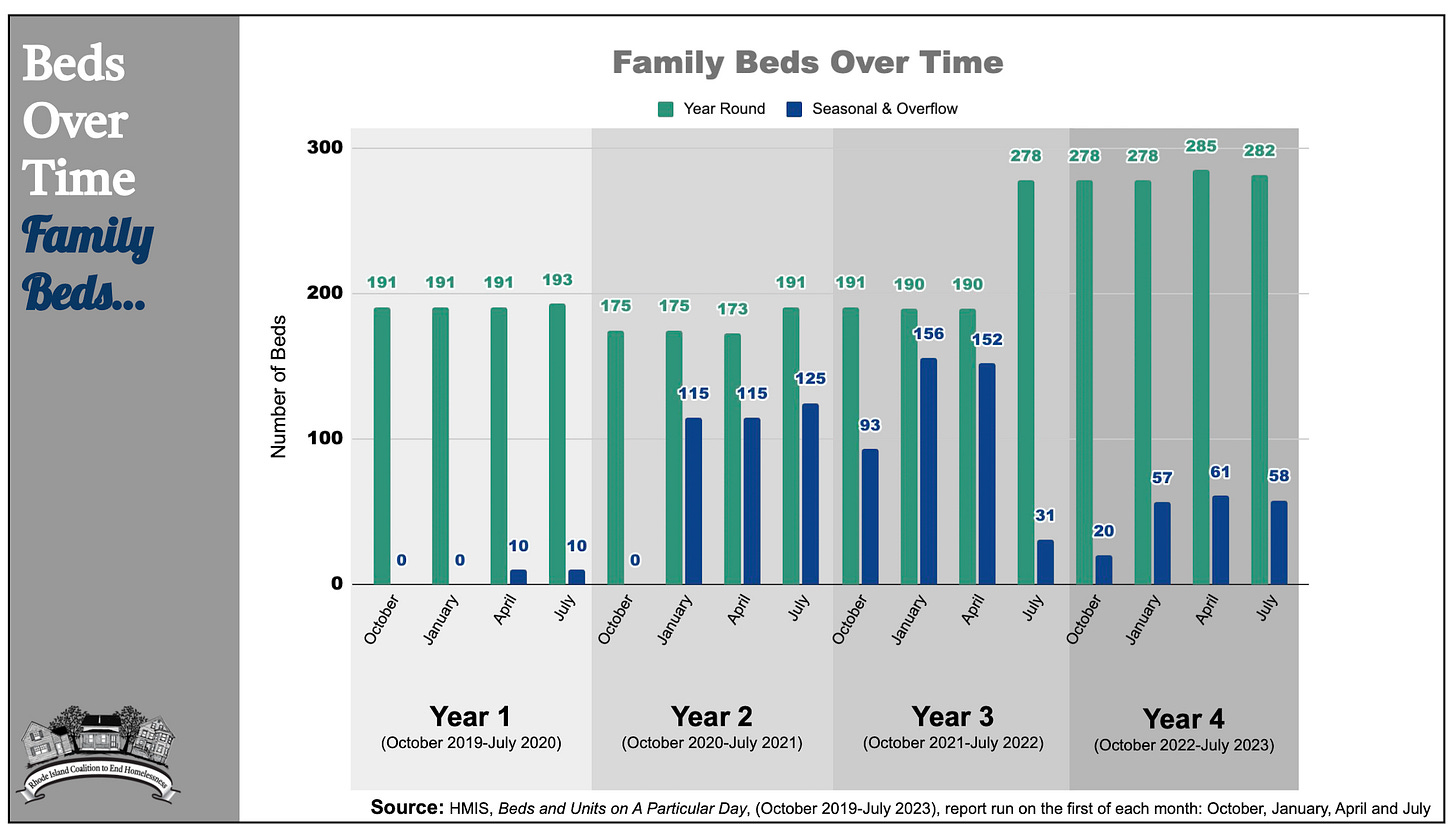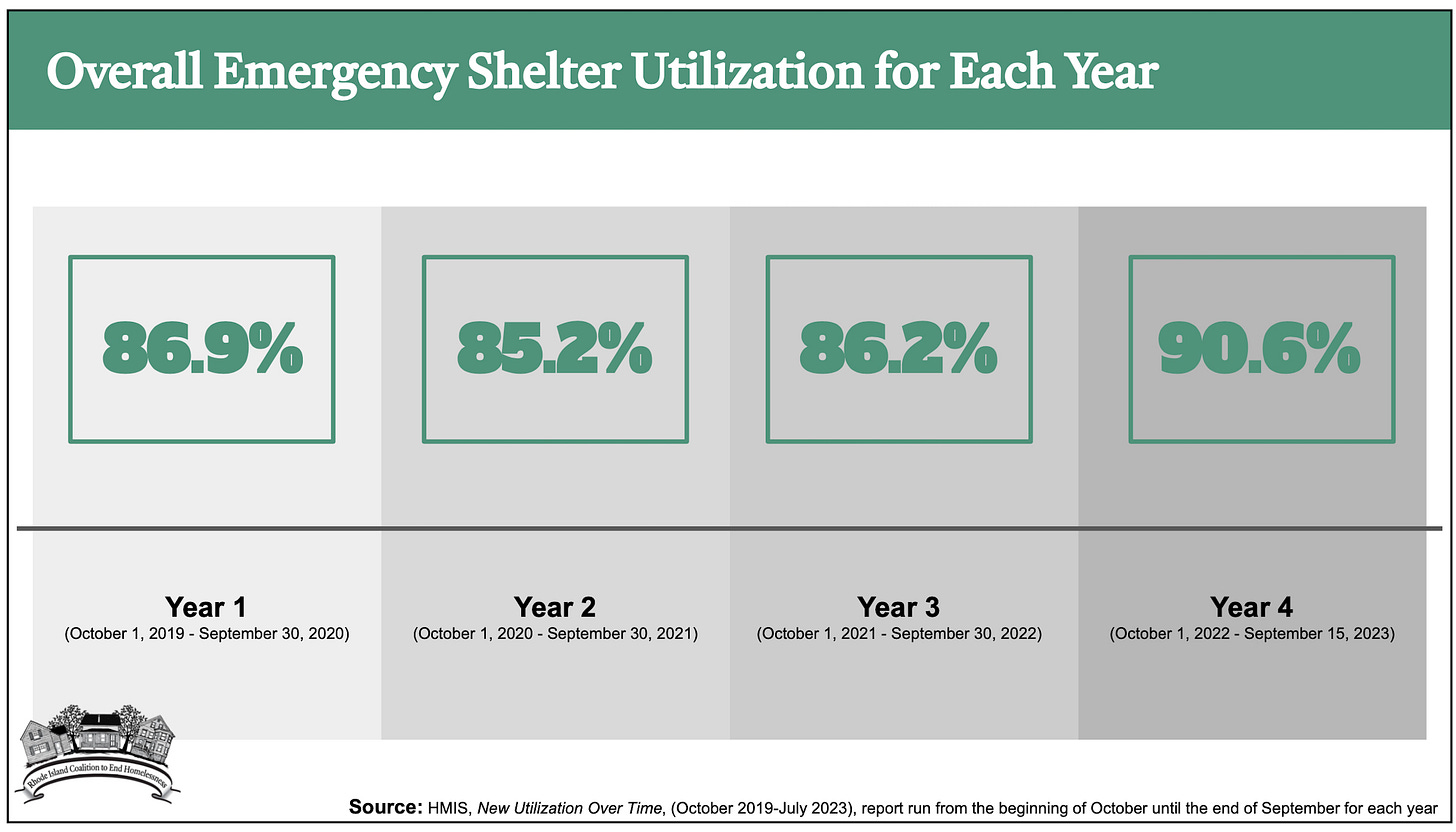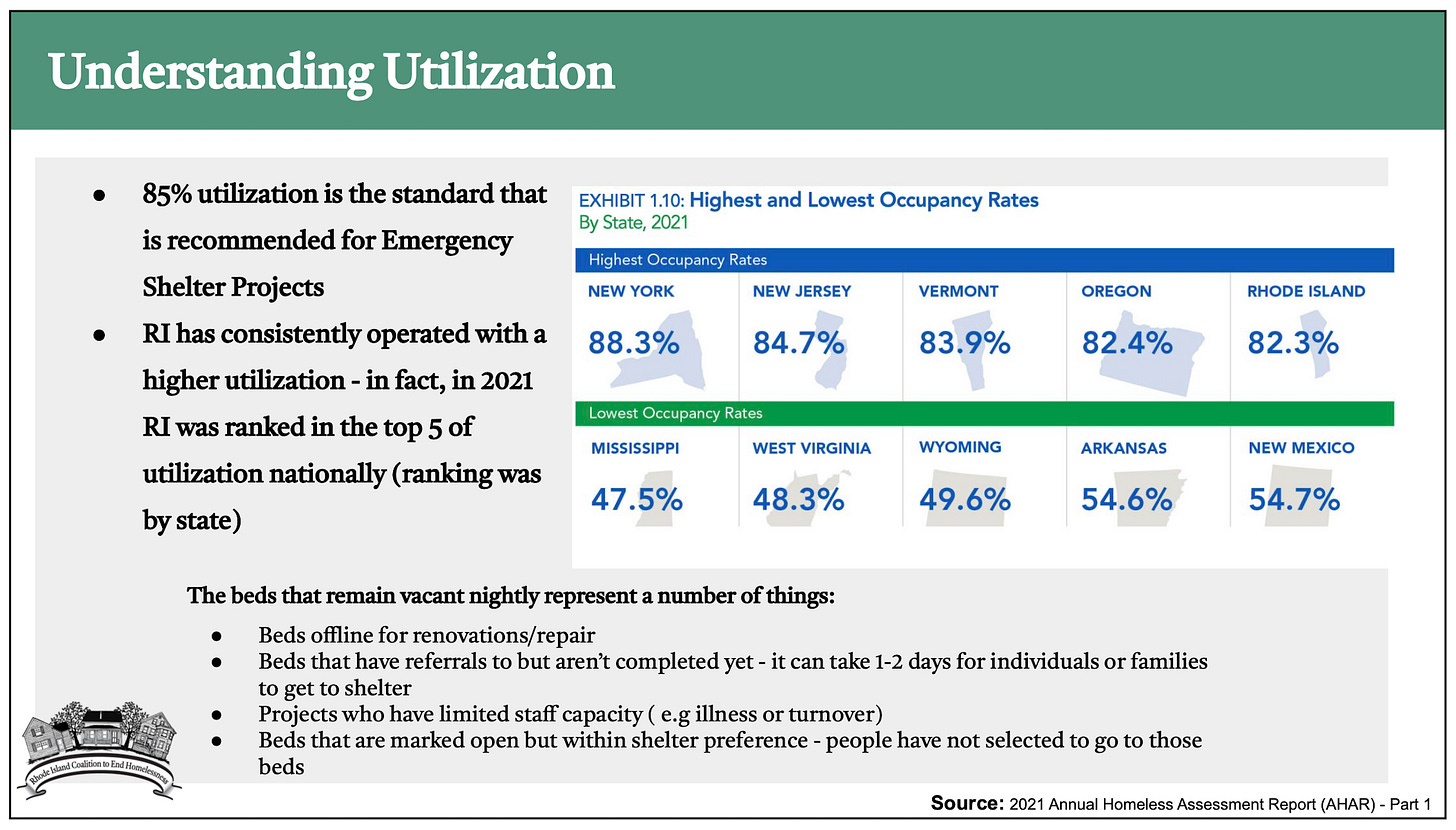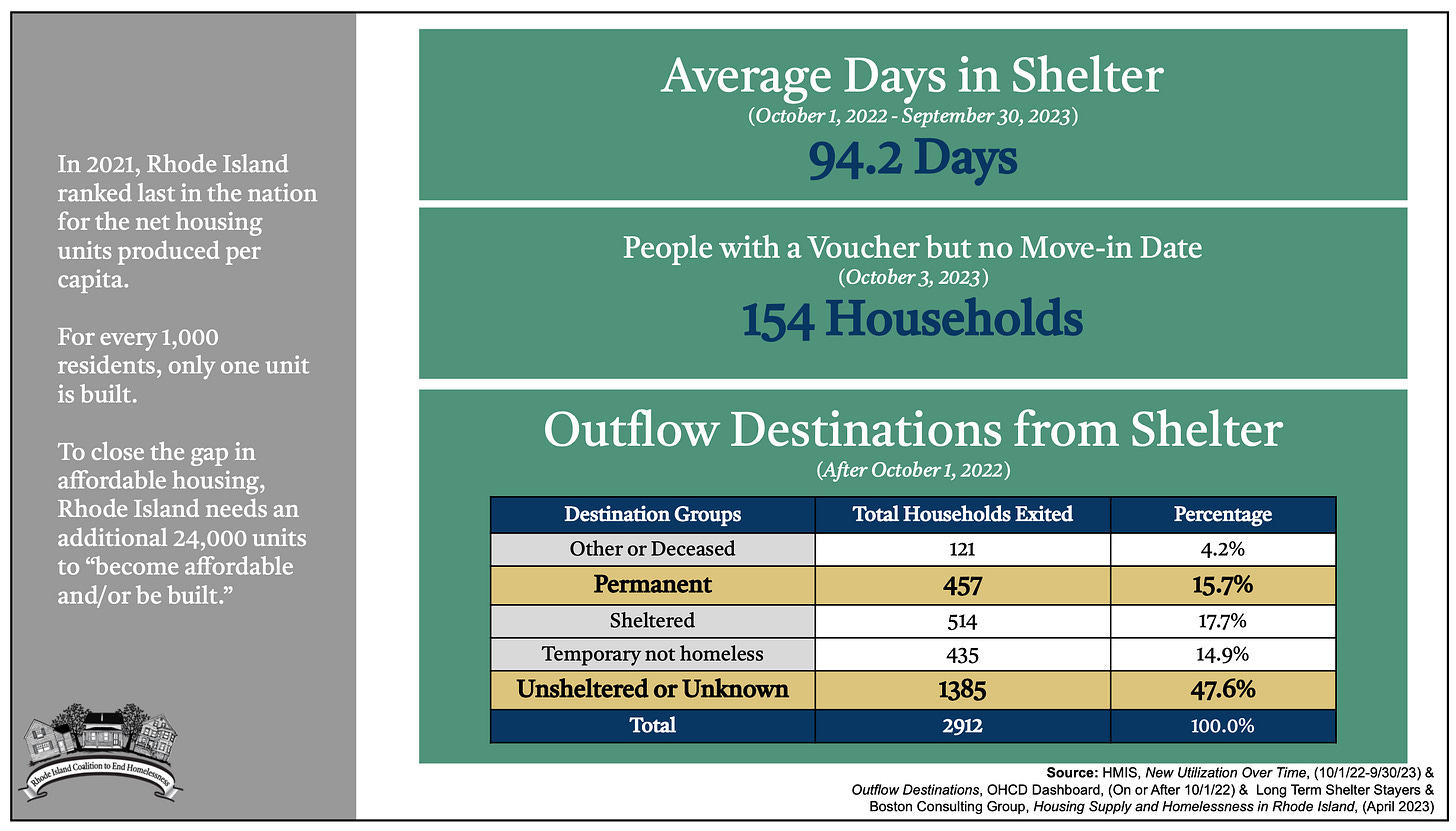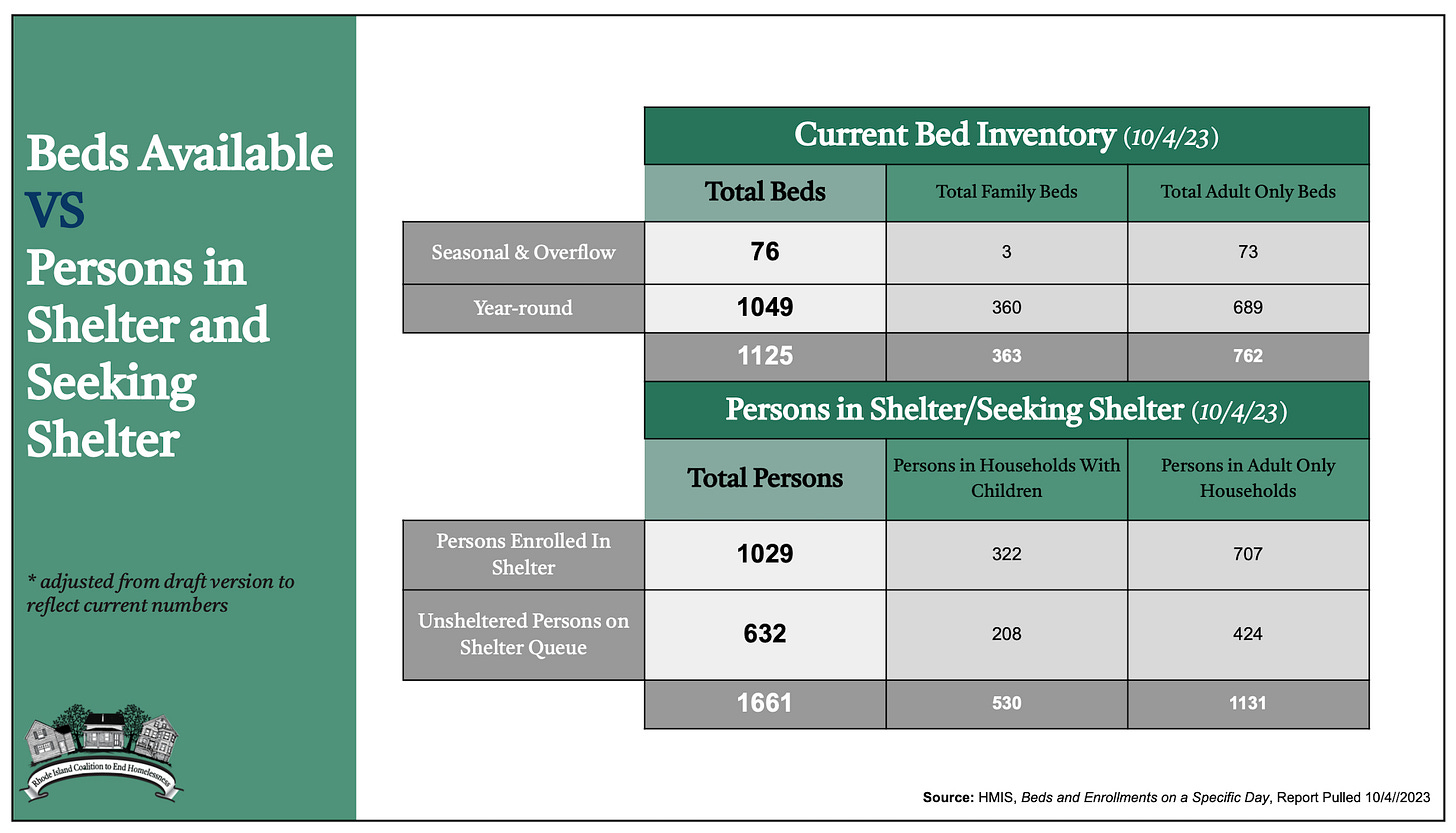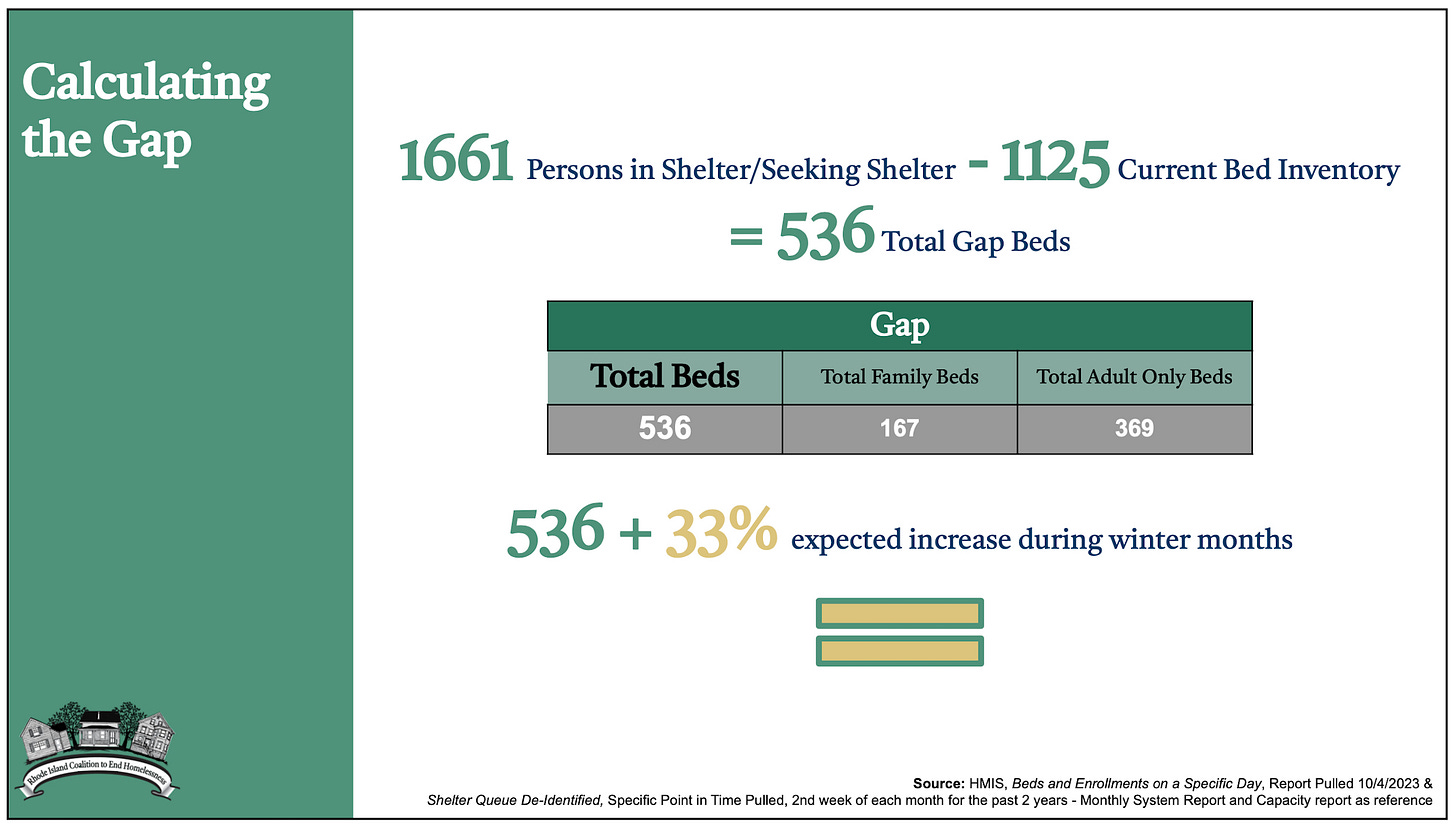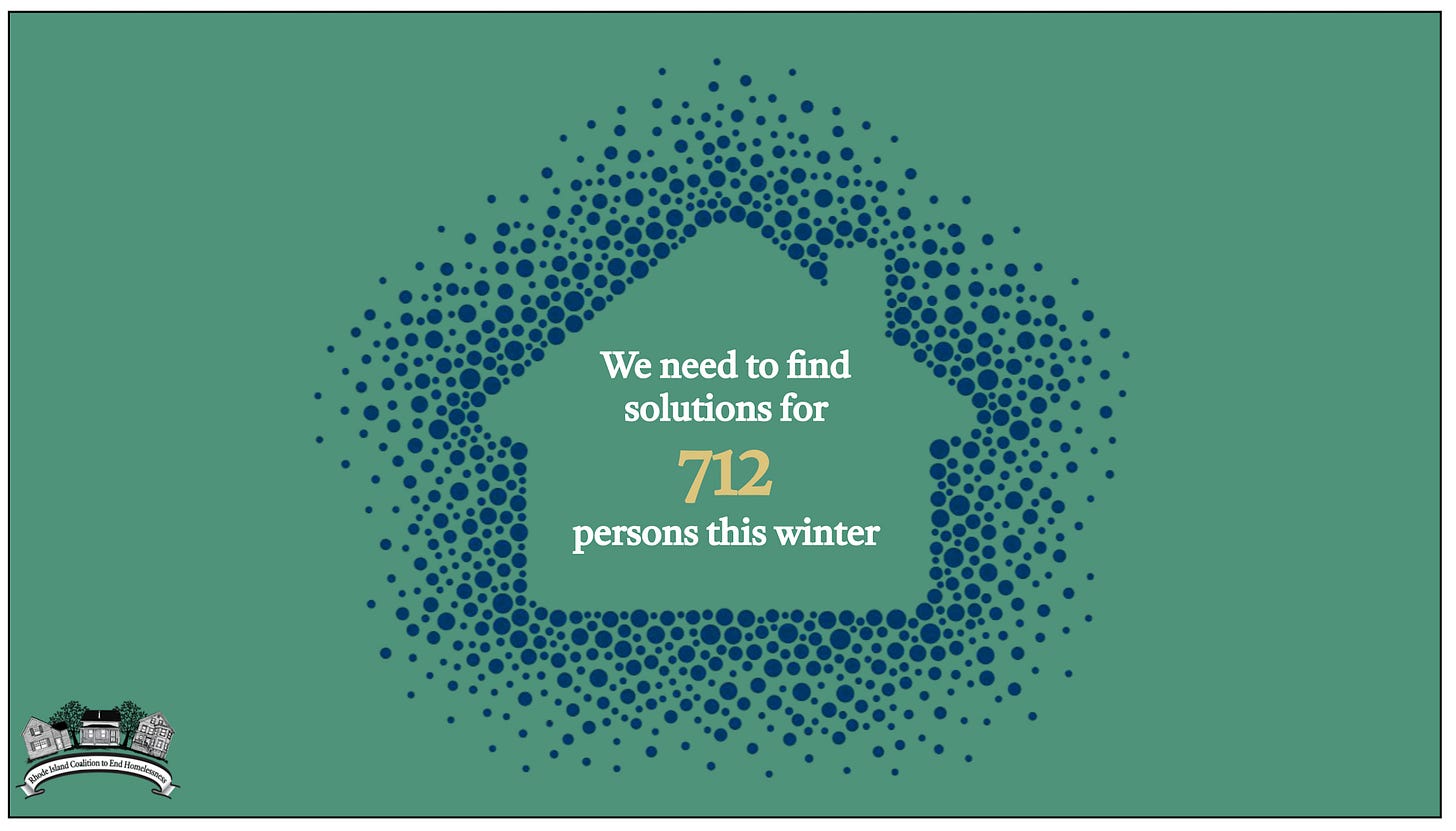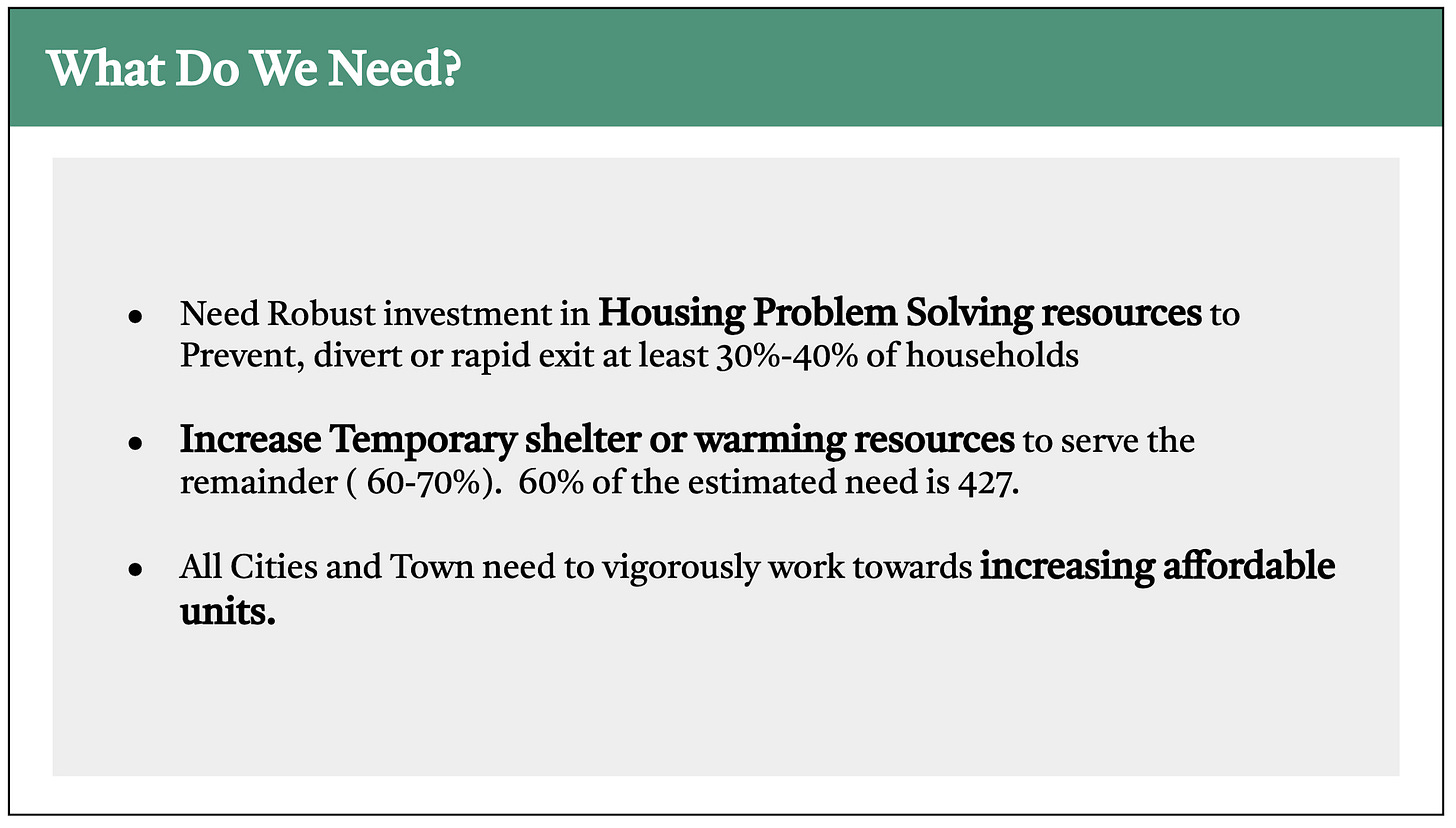Report: We need to find solutions for 712 unsheltered persons this winter
There has been a 71.5% increase in the overall number of people experiencing homelessness in Rhode Island since 2019...
Due to concerns about time, a report from the Rhode Island Coalition to End Homelessness [Coalition] was cut from Thursday’s Rhode Island Continuum of Care board meeting. The report, HMIS Bed Analysis Fall 2023, will be heard at the next board meeting, but the data contained therein is of immediate concern. The report is a statewide analysis of homelessness trends in Rhode Island, with an emphasis on what resources will be needed this winter.
Jennifer Barrera, Chief Strategy Officer at the Coalition, walked me through the report, presented in full below. For reference, CES is the Coordinated Entry System, the system that allocates shelter beds to people experiencing homelessness in Rhode Island.
Jennifer Barrera: The number of people experiencing unsheltered homelessness has grown over the last four years. We anticipate more growth in the upcoming winter.
Steve Ahlquist: Could that be tied to the end of the Covid era pandemic money?
Jennifer Barrera: Absolutely. We have no new funding for CES. We were just level-funded for six months, to just continue operating as normal. That was announced two weeks ago. We do have more funding for shelter but, our system has not been able to add adequate resources for the numbers we are seeing.
Barrera: Our two-week, current living situation number has been hovering around 400 people for two weeks.
Barrera: We've had a large inflow, to the tune of more than 16,000 people, in the last four years. Most of the people coming in are sheltered, but they're in an at-risk situation. They're at risk of homelessness within 14 days. There is also a large, growing population of unsheltered people inflowing into our system. When I say inflow, I mean people not known to our system in the last seven years. They've not been served. It's not recidivism, it's new people. If you look at the 16,000 number, that means one out of every 100 Rhode Islanders has contacted coordinated entry, seeking assistance, in the last four years.
Jennifer Barrera: We've got a growing number of people in our shelter queue, what we identify as unsheltered. These are people who are unsheltered and on the Shelter Queue - this should not be confused with the two-week Current Living Situation assessment (the two-week number). These are people from at least the last 30 days who have remained in the queue seeking shelter placement.
This includes 66 households with children.
Jennifer Barrera: This chart shows the shelter queue over time. Every fall we have an increase in the number of people seeking shelter. Naturally, as the weather gets cooler, people are less willing to be outside and less likely to stay outside.
Last year we had this dip, and the reason for the dip is we had a reported 900 unduplicated people served at the Armory. The folks at the Armory were not all entered into the system. So of those 900 people, only 400 ended up in our system. Another 500 people were served by the Armory, but not quite reported by the system.
Trend-wise, we measure about a 33% bump in people seeking shelter for the winter months in Rhode Island.
Jennifer Barrera: Here, we're showing all the folks who contacted Coordinated Entry and got placed in the shelter queue. When they call and say, "Yes, I'd like shelter," about 22% of them get referred to shelter.
This chart shows the efficacy of the CES system in terms of the total length of time it takes folks to get into a shelter. This is by household type. For families, it takes 2.3 days, once they're referred, to get into a shelter.
It takes families time to pack up all their stuff from wherever they are. A lot of times the adults are working, there are childcare concerns, specialty early interventionists, or medical providers, and it takes families a little bit longer for them to physically move their kids and their belongings to a shelter.
Steve Ahlquist: So they're not necessarily outside during this time, but they could be?
Jennifer Barrera: What we find is that families are pretty crafty. Adults may be sleeping in cars outside, but they find places where their children can go, like schoolmate's houses. Sometimes their grandmother might be in a disabled housing complex and the adults can't live there, but the grandmother can take in a child for a couple of nights.
Jennifer Barrera: Here's the current inventory of beds that we have online. The difference between the green color and the darker color is the green color is year-round beds as opposed to temporary beds. Some temporary beds are seasonal, some are overflow.
Jennifer Barrera: The green line represents the total growth in the number of year-round beds. We have effectuated more year-round beds in our system over the last four years. We brought a ton of temporary beds online for the COVID pandemic and the growing numbers of people in need, but last winter, we weren't as successful at bringing temporary beds online. They're costly and they stretch staff capacity.
Steve Ahlquist: Plus, there's no more federal money for these programs.
Jennifer Barrera: It costs money and the FEMA1 subsidy is gone. This year, not only do we need to dial up year-round beds, but we also need to be able to get more temporary beds and warming centers online.
Jennifer Barrera: One of the things that we continue to talk about is utilization. Our utilization is just over 90%. That’s a great utilization rate. This shows our utilization over the last four years.
Jennifer Barrera: Our utilization was highlighted in a HUD2 report as being one of the top five utilizations in the country in 2021, and the AHAR, which is the Annual Housing Assessment Report.
So here we are, Little Rhodie. We have good utilization.
Steve Ahlquist: And that's a good thing.
Jennifer Barrera: Some people are using this as a point of criticism, that there are 10% of beds on a given night that could be empty. But some beds have active referrals and people are pending moving in. Some are offline to be cleaned and prepared for new occupants. There are a whole number of reasons, but the marker for a healthy system is 85% utilization.
Jennifer Barrera: The length of time people stay in shelters grows yearly. That number is directly related to the number of available housing opportunities, so we need cities and towns to develop housing immediately. Everyone needs to be developing housing.
It's not just covid. In 2021, we ranked last in the nation. Rhode Island has underinvested resources in housing for decades - 30 years at least. It’s about housing, housing, housing, housing. Winter beds aren't about housing. No one is going to magically put units online by this winter. And as long as we continue the stagnated housing growth, we're going to continue to have these conversations every year.
Another important thing to know is the outflow. For a good chunk of people leaving shelters, we don't know what they're doing, or if they are going back to unsheltered status. This is important to know because it means that they're not going into an apartment, they're going outside or otherwise resolving their homelessness.
Sometimes people are leaving and solving their housing problem by getting roommates or whatever, but in general, it's not a permanent destination.
Jennifer Barrera: We have 1,125 beds. We need, according to our queue, 1,661 beds.
Jennifer Barrera: And if we take that amount, that difference…
Jennifer Barrera: …and we increase it by our 33%, we need solutions for 712 people, this winter.
Jennifer Barrera: The solutions are not, “You get a bed, and you get a bed.” The solutions are rather complex. We recommend a deep investment in housing problem-solving. If cities, towns, funding sources, and philanthropic organizations can fund housing problem-solving, we can prevent, divert, or rapidly exit 30-40% of households so they never come through our doors. Or if they are not able to be prevented or diverted and do come into our system, we can rapidly exit them. That would reduce the number of people we need to shelter or keep warm this winter down to a more reasonable number of 427.
Steve Ahlquist: Essentially an Armory's worth.


